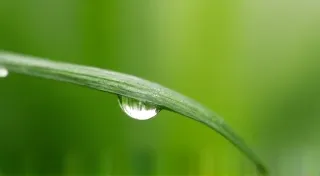The Herbal Alchemist's Primer: A Journey into Safe Blending
There's a certain poetry to the act of blending. Consider the antique accordion, its bellows a lung, drawing in breath and exhaling a melody woven from countless reeds. Each reed, a carefully chosen piece of metal or bamboo, contributes its unique timbre to the whole. The craftsman's skill lies not just in the individual components, but in their harmonious interaction – a delicate alchemy of sound. Similarly, crafting tea blends for our beloved pets – dogs, cats, and rabbits – demands a comparable reverence for ingredients and their interplay.
My own introduction to the world of herbalism wasn't in a laboratory, but in my grandfather’s workshop. He wasn't a herbalist, but a clockmaker—a man who understood the intricate workings of complex systems, the importance of precision, and the beauty of natural materials. I remember the scent of aged wood, the meticulous cleaning of tiny gears, the satisfying click of a clock returning to life. He always said, "Everything has its purpose, child. Even the smallest cog.” This philosophy instilled in me a profound respect for understanding the ‘purpose’ – the potential benefit and the inherent risk – of anything we introduce into a living system, be it a grandfather clock or a delicate digestive tract.

The Foundation: Identifying Safe Herbs for Pets
The enthusiasm for natural wellness is understandable, especially when it comes to our pets. However, simply because something is ‘natural’ doesn’t mean it’s safe. Many herbs that benefit humans are toxic to animals, and dosage plays a critical role. What constitutes a therapeutic dose for a person can be an overdose for a dog, cat, or rabbit.
The first and most crucial step is thorough research. Reliable sources are key. Avoid generalized online forums or anecdotal accounts. Instead, consult veterinary herbalists, reputable books on pet herbalism (always check publication dates – knowledge evolves!), and academic studies when available. The ASPCA's Poison Control Center website is also an invaluable resource for identifying plants and herbs known to be toxic to pets.
Some herbs generally considered safe for dogs, in *moderation* and under proper guidance, include chamomile (for calming), ginger (for digestion, *avoid with bleeding disorders*), and dandelion leaf (a gentle detoxifier and source of vitamins). For cats, the landscape is more restricted. Catnip is the obvious one, but even seemingly benign herbs like lavender can cause sensitivities in some felines. Rabbits, with their delicate digestive systems, require a particularly cautious approach. Fresh herbs are often preferred over dried for rabbits, as dried herbs can be more concentrated and harder to digest.
Understanding Contraindications and Interactions
Herbalism isn’t a one-size-fits-all approach. Just as certain medications interact with each other, herbs can interact with medications and exacerbate existing health conditions. A seemingly harmless blend could be detrimental if your pet is already being treated for a specific ailment or is taking prescription drugs.
For example, St. John's Wort, often used for human depression, can interact with various medications, including those used to treat heart conditions. Similarly, comfrey, known for its healing properties, should be avoided entirely due to the potential for liver toxicity, especially in pets. Understanding the mechanism of action of each herb is vital. Does it stimulate the liver? Does it affect blood clotting? Does it have diuretic properties?
Always, *always* consult with a veterinarian, preferably one with experience in herbal medicine, before introducing any new herbs into your pet’s diet. Be prepared to provide them with a detailed list of all medications and supplements your pet is currently taking.
Craftsmanship in Blending: Respecting the Process
The act of blending is more than just mixing ingredients; it’s a craft. Just as an accordion maker meticulously selects each reed, ensuring its quality and resonance, the herbalist must approach blending with a similar level of care. This involves understanding the synergistic effects of herbs – how their properties combine to produce a greater effect than the sum of their individual actions.

For instance, combining chamomile (calming) with lemon balm (also calming) can enhance the relaxing effect. However, knowing *when* to combine certain herbs and in what proportions requires experience and a deep understanding of their individual characteristics. Starting with small, simple blends is always recommended. Experimentation should be gradual and closely monitored. The journey of cultivating this understanding can be rich and rewarding, often echoing the traditional wisdom passed down through generations – a legacy of the herbalist. For those inspired to delve deeper into the historical and cultural context of pet healing, exploring unveiling the hidden language of herbs can provide invaluable perspective.
Sourcing and Quality: The Importance of Purity
The quality of ingredients directly impacts the efficacy and safety of the blend. Just as a clockmaker relies on high-quality gears to ensure the longevity of a timepiece, the herbalist must source herbs from reputable suppliers who prioritize purity and sustainability.
Organic herbs are generally preferred, as they are grown without synthetic pesticides and herbicides. Consider the form of the herb – fresh, dried, or tinctured. Fresh herbs are often more potent and offer a wider range of volatile oils. However, they are also more perishable and require proper storage. Dried herbs should be stored in airtight containers away from light and heat. Tinctures, concentrated extracts of herbs in alcohol, offer a convenient and potent delivery method, but require careful dilution and dosage.
Beyond the Blend: Cultivating an Herbal Garden
While sourcing from reputable suppliers is essential, many dedicated pet owners find immense satisfaction in cultivating their own herbal gardens. This not only ensures the freshness and quality of the herbs but also fosters a deeper connection with nature and a heightened appreciation for the healing power of plants. This path requires diligence and an understanding of plant care, but the rewards – fresh, vibrant herbs tailored specifically for your pet's needs – are immeasurable. Imagine the joy of presenting your pet with a vibrant blend, knowing that each ingredient was nurtured with your own hands. For those inspired to embark on this fulfilling endeavor, learning about the serendipity of scent for your pet’s wellness can be a wonderful starting point.
Addressing Sensitivity and Anxiety
Observing your pet’s response to herbal blends is paramount. Sometimes, despite careful research and preparation, sensitivities or anxieties may arise. These reactions can manifest in various ways, from mild digestive upset to behavioral changes. When faced with such situations, it's crucial to remain calm and methodical, seeking guidance from a qualified veterinary herbalist and discontinuing the blend if necessary. Understanding the nuances of these reactions requires a holistic approach that considers not only the physical but also the emotional well-being of the pet. If anxiety seems to be at the root of the problem, exploring ways to ease your companion’s discomfort can be truly beneficial. Further understanding whispers from the meadow can provide valuable insight.
A Gentle Approach: Observation and Adjustment
Ultimately, successful pet herbalism is a journey of observation and adjustment. Just as an accordion maker tunes an instrument based on the player's skill and preference, the herbalist must constantly monitor their pet’s response to the blend. Look for subtle changes in behavior, appetite, digestion, and overall well-being. Be prepared to adjust the blend or discontinue use if any adverse reactions occur.
The most important lesson from my grandfather’s workshop wasn't about gears and springs; it was about respect for the intricate systems we're dealing with. Whether it's the delicate mechanism of a clock or the complex physiology of a beloved pet, understanding, caution, and a craftsman’s dedication are the keys to bringing harmony and well-being.






